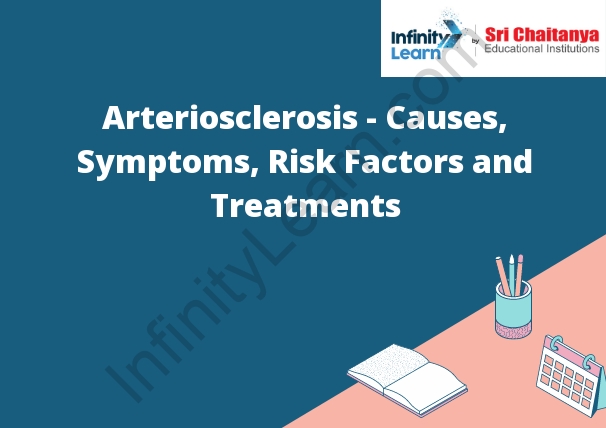Table of Contents
Introduction to Arteriosclerosis; Atherosclerosis
Arteriosclerosis is a condition in which the walls of the arteries become thick and stiff. This makes it difficult for blood to flow through the arteries. The condition is often called hardening of the arteries.
Atherosclerosis is a type of arteriosclerosis. In atherosclerosis, the arteries become clogged with fatty deposits called plaque. This can lead to a number of problems, including heart attack, stroke, and peripheral artery disease.

Atherosclerosis Meaning
Atherosclerosis is a type of arteriosclerosis, a condition in which the arteries become narrowed and hardened. Atherosclerosis is a gradual process that begins with the accumulation of a waxy substance called plaque on the inner lining of the arteries. The plaque consists of cholesterol, fatty materials, and other cellular debris. As the plaque builds up, the artery becomes narrower and less flexible. This can lead to a number of problems, including heart attack, stroke, and other circulatory problems.
Atherosclerosis Causes, Diagnosis and Symptoms
Atherosclerosis is a disease in which the arteries become narrowed and hardened by a build-up of plaque. This build-up is made up of cholesterol, fatty materials, calcium and other substances. Atherosclerosis can lead to heart attack, stroke, or other cardiovascular diseases.
Atherosclerosis is most commonly caused by a combination of lifestyle factors such as smoking, high blood pressure, high cholesterol, and obesity, and genetic factors.
Atherosclerosis is diagnosed by a physical examination and by using imaging techniques such as ultrasound, CT scan, or MRI.
Atherosclerosis can cause a number of symptoms, including chest pain, shortness of breath, heart attack, stroke, and other cardiovascular diseases.
Causes
and effects of deforestation
Deforestation is the clear-cutting of trees in an area where forest once thrived. Deforestation can refer to the natural loss of trees, as well as the potential destruction of forests due to the practices of people.
Causes of deforestation include:
· The clearing of land for agriculture
· The logging of trees for timber
· The mining of coal and other minerals
· The building of roads and cities
Effects of deforestation include:
· The loss of habitat for animals
· The loss of trees that help to regulate the climate
· The loss of soil that can lead to erosion
· The release of carbon dioxide into the atmosphere
Signs and Symptoms of Atherosclerosis
Atherosclerosis is a condition where the arteries become clogged with plaque. This plaque is made up of fatty deposits, cholesterol, and other debris. As the plaque builds up, the arteries become narrower and less flexible. This can lead to a number of problems, including heart attack, stroke, and even death.
The most common symptoms of atherosclerosis are chest pain and shortness of breath. These symptoms can be caused by a heart attack or stroke. Other symptoms include:
-Fatigue
-Numbness or tingling in the hands or feet
-Pain in the legs or hips
-Dizziness
-Swollen ankles or feet
-Racing heart beat
If you experience any of these symptoms, see your doctor right away.
Diagnosis
is the process of identifying a disease or condition in a person. The first step in diagnosis is to ask the person about their symptoms and medical history. The doctor will also do a physical exam and may order tests to help determine the cause of the symptoms.
Complications of Arteriosclerosis
There are a number of potential complications associated with arteriosclerosis, including:
• Stroke: This occurs when the blood supply to the brain is interrupted, leading to tissue death.
• Heart attack: This occurs when the blood supply to the heart is interrupted, leading to tissue death.
• Peripheral artery disease: This occurs when the arteries that supply blood to the limbs become narrowed or blocked.
• Kidney failure: This occurs when the arteries that supply blood to the kidneys become narrowed or blocked.
• Eye problems: These can include damage to the retina and glaucoma.
Risk Factors Associated with Atherosclerosis
Atherosclerosis is a condition that is associated with various risk factors. Some of these risk factors include:
Smoking
High blood pressure
High cholesterol
Diabetes
Obesity
A family history of atherosclerosis
A history of heart disease
Age (risk increases with age)
Gender (risk increases for men)
Race (risk increases for African Americans and Hispanics)
Treatment of Atherosclerosis
There is no one definitive treatment for atherosclerosis. Treatment options focus on slowing the progression of the disease and preventing complications.
Lifestyle changes such as quitting smoking, eating a healthy diet, and exercising regularly are important for everyone, but are especially important for people with atherosclerosis.
If you have atherosclerosis, your doctor may prescribe medications to help improve your cholesterol levels and lower your risk of heart attack and stroke.
If you have symptoms of atherosclerosis, your doctor may recommend medications or procedures to treat the condition.
For more visit Arteriosclerosis – Causes, Symptoms, Risk Factors and Treatments









